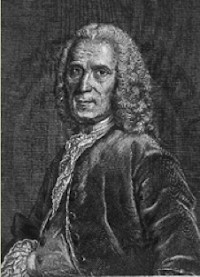Heroes 8: the sources behind the sources

As I explained in an earlier installment of this series, Nanni of Viterbo (1437-1502) had published a collection of bogus sources on ancient history. The sixteenth century witnessed a lively debate about the authenticity of these texts. One of the advances during this debate was that scholars learned what they might expect of a reasonable chronology of the ancient world. However, this was not the only advance. The scope and potential of numismatics and epigraphy was recognized. Today, we’ll focus on source criticism: the study of the sources of the sources.
In the Renaissance, history was very much an instrument that could be used for other purposes. Historical truth was not the most important aspect. For example, historical examples could be presented to teach explicit lessons. An example is the famous list of Roman emperors in Machiavelli’s The Prince, in which the author offers examples that confirm his theories. Of course, we would not call this objective history, because the author left out what he could not use.
People were not above inventing the past that they needed. Dutch scholars, for example, introduced an oriental prince named Bato, who was the first of the Batavians, the tribe that the Dutch had adopted as their ancestors. It was not unlike Geoffrey of Monmouth, the British author of the History of British Kings, who had given his compatriots a Trojan ancestor named Brutus. Nanni was not the only one to make up things.
The best historians of the seventeenth and eighteenth centuries were the ones writing about contemporary events. After all, they could check documents in archives and occasionally even interview people who had been involved. Of course, the people studying ancient history had no archives, but they realized that “primary sources” were important – it had been none other than Nanni who had stressed their importance. Instead of looking for archives, the historians of Antiquity started to look for something that was the closest substitute for an eyewitness account or an archival document: they started to investigate the sources of their sources. If they didn’t have primary sources, they could at least try to get closer to them.
When studying the text of an ancient author – let’s say, the Roman historian Livy – the sixteenth- and seventeenth-century historians would first start by identifying his sources, which is comparatively easy, because Livy is candid about them: Polybius, Claudius Quadrigarius, Valerias Antias, Fabius Pictor, and so on. Most of them are now lost. After identifying these older texts, scholars would try to reconstruct what those earlier authors might have written, and would attempt to evaluate those reconstructed lost sources. Who were the authors? Where did they find their information? How reliable was their information?
An example was the Critical History of the Old Testament by French scholar Richard Simon, published in 1678. He pointed out that Moses could never have been the author of Deuteronomy and proved that the Jewish Bible was a library of texts, written by different authors who were not always in agreement. Still, Simon was convinced that the information contained in the Bible was extremely reliable, because the Jews had had a college of history writers who had recorded their history almost at the moment that it happened. Here we recognize a good historian’s longing for primary sources.
A similar study, written by Jean Astruc (court physician of Louis XV) was published in 1753: Conjectures about the Original Documents which Moses Appears to Have Used when Writing the Book of Genesis. Astruc correctly observed that there were two names for God (YHVH and Elohim), and he assumed that at least two documents had been joined together. This theory does indeed explain many inconsistencies in the five first books of the Bible and has been quite influential in the nineteenth and twentieth centuries.
In this way, the historians of the seventeenth and eighteenth centuries started to look for the sources of the sources. In 1751, the British literary critic Samuel Johnson joked that the writing of history was the simplest of all literary pursuits, because the historian
is not to form, but copy characters, and therefore is not blamed for the inconsistency of statesmen, the injustice of tyrants, or the cowardice of commanders. The difficulty of making variety consistent, or uniting probability with surprise, needs not to disturb him; the manners and actions of personages are already fixed; his materials are provided and put into his hands, and he is at leisure to employ all his powers in arranging and displaying them
It’s funny indeed, but Johnson was severely misrepresenting the nature of historical investigation. History was, at that moment, already more than just arranging material that had already been provided. It required textual criticism.

